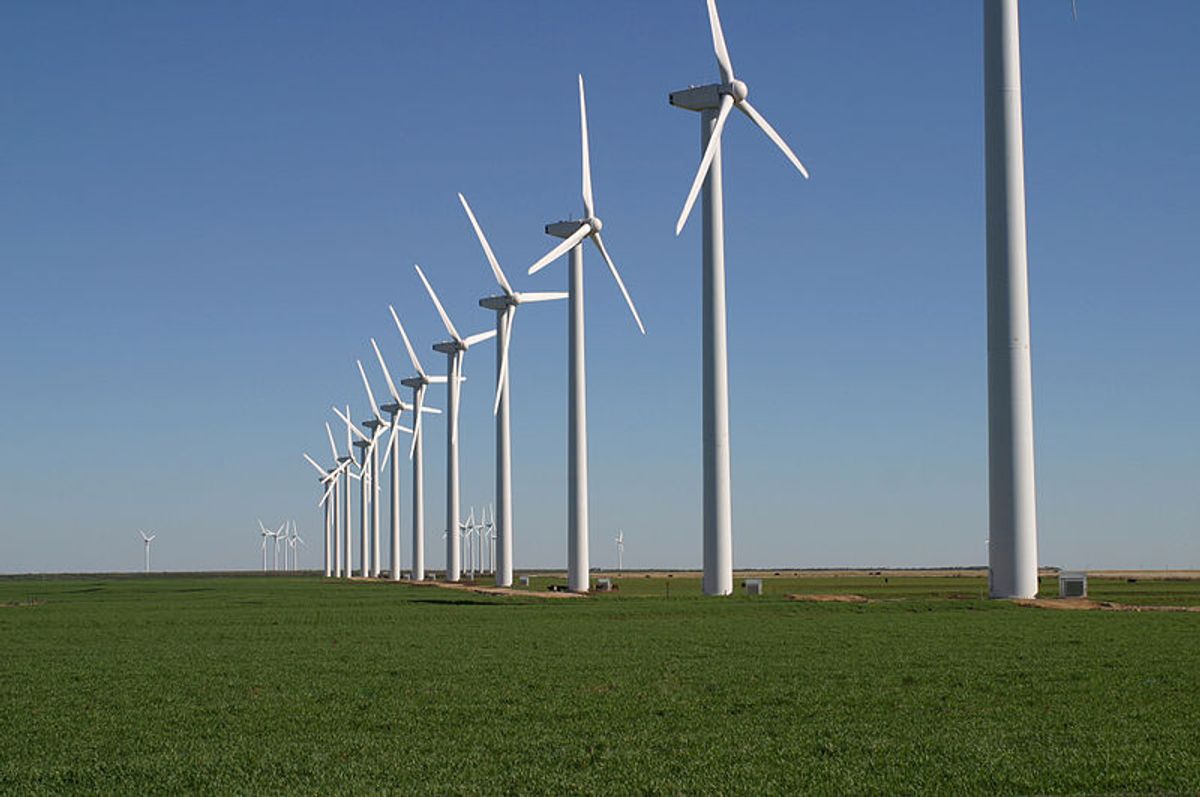The future of wind power in the United States is breezy, according to Enabling Wind Power Nationwide, a report released this week by the Department of Energy. This lays out some impressive numbers, present.
U.S. wind generation substantially contributes to reducing power sector environmental impacts. In 2013, greenhouse gas (GHG) emissions were reduced by 115 billion metric tonnes; sulfur dioxide (SO2) emissions were reduced by 157,000 metric tonnes; nitrogen oxide (NOx) emissions were reduced by 97,000 metric tonnes; and water consumption was reduced by 36 billion gallons... due to wind power. U.S. wind is also supporting an average of 73,000 total jobs over the period 2010–2014 and more than 500 U.S. manufacturing facilities operating in 43 states.
and future,
Under a scenario in which wind energy grows to serve 10% of the nation’s electricity demand by 2020 and 20% by 2030, wind power is estimated to provide annual benefits of $9 billion in 2020 and $30 billion in 2030 from air pollution reductions and greenhouse gas emissions reductions. These environmental benefits are bolstered by consumer savings for natural gas purchases outside the electric sector, wind investment derived jobs totaling 330,000-426,000 by 2030, and direct land-lease and property tax payments totaling hundreds of millions of dollars annually by 2020 and billions of dollars annually by 2030.
There's a catch however: in order to find enough space for the turbines required to make these projections a reality we will need to place them in areas where geographical features and physical obstacles weaken the wind. To overcome this we'll need bigger turbines, half again as tall as the Statue of Liberty, with equivalently enormous blades. That will cause problems, which the report is not shy in listing, including threats to ecosystems and wildlife, NIMBYism and transportation logistics. This last one is more important than it sounds; it can be a challenge to get the enormous parts out to the remote areas where turbines are often built, adding as much as 10% to the cost of current generation turbines. The gigantic turbines of the future might have parts literally too large to fit under bridges. Addressing all these problems will be expensive, and this means that the cost of wind generated power will level off after declining rapidly for decades.
One glaring assumption that the report makes is that all of our future wind power generation will be land-based. Why not at sea? Construction began last month on America's first offshore wind farm; the Block Island wind farm will be completed in 2016, and have five turbines generating 30 megawatts, enough to power 17,000 homes. To put that in perspective, that's only 25 years after Denmark built Europe's first offshore farm. Europe currently has more than 2,488 turbines generating 8,045 megawatts, with a further 2.9 gigawatts under construction. The U.S. is a laggard thanks to the blocking efforts of conservatives and in particular the Koch brothers, who dislike all wind power. A proposal for a 130-turbine farm fell apart this January thanks largely to the efforts of Bill Koch, who didn't want it ruining his view. If this interference wasn't at play, could we do as well as the Europeans?
Then there are more experimental options that may hold promise, from solar updraft towers, to turbines that fly in the sky, to turbines that don't have any blades. Could innovations like these be a way around the drawbacks of more traditional turbines?
The benefits of wind power are clear, but as with any means of generating power there are compromises and adjustments to be made. Will the United States be able to reach the goal of generating 20% of its power from wind by 2030? How can we change the negative impression of wind power that some people have? Let us know in the comments!



Shares